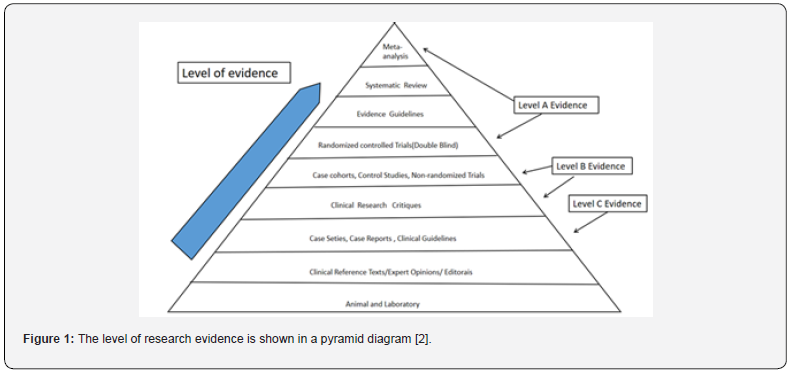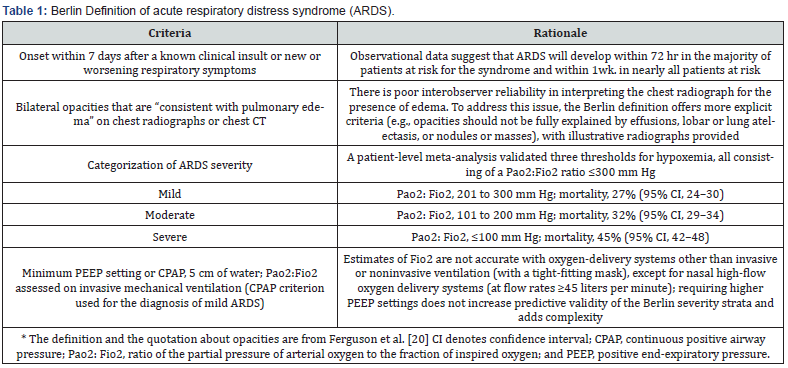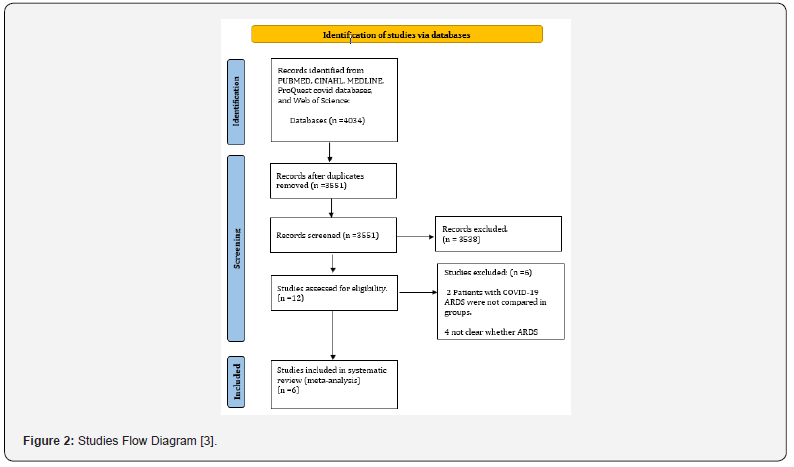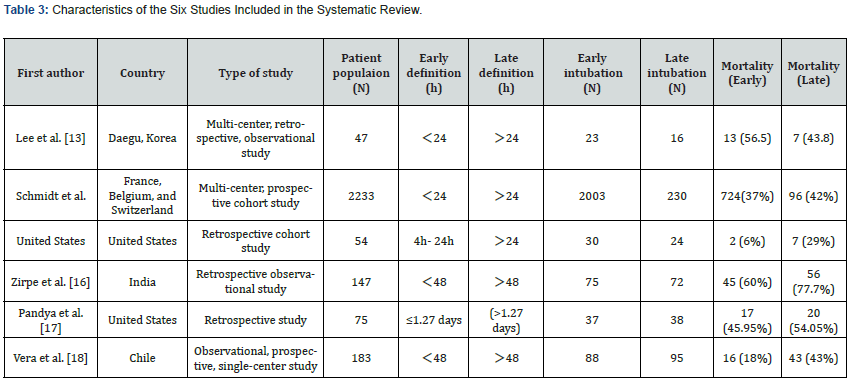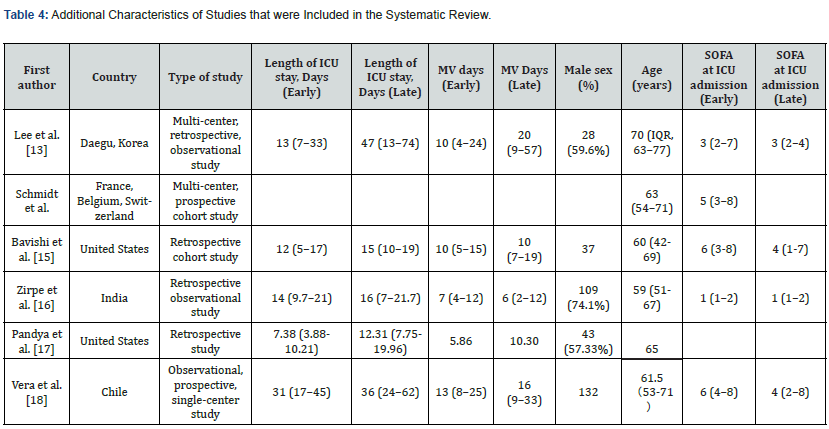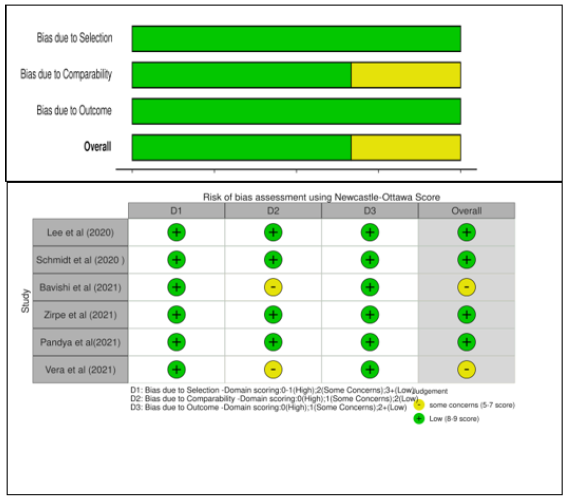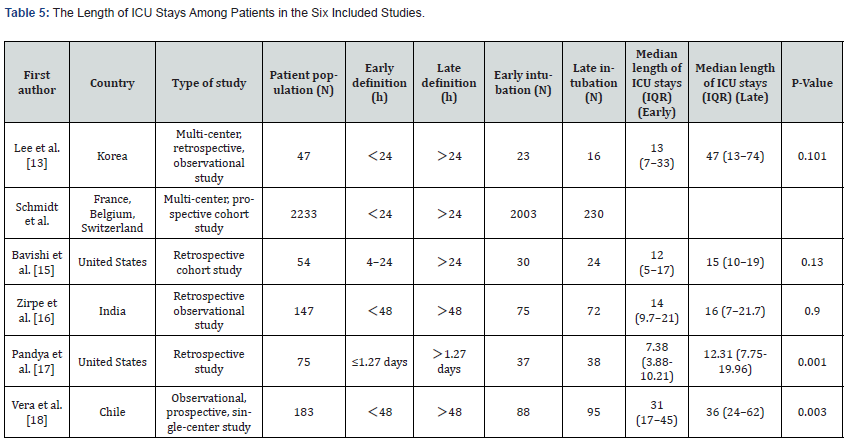Intellectual & Developmental Disabilities - Juniper Publishers
Abstract
This research study examines the associations between dimensions of emotional intelligence (EQ) and adult attention deficit (AAD) in order to provide a framework for future research. A total of 219 management students completed three measures of AAD and a multi-dimensional measure of EQ (Bar-on EQI). Product moment correlations were used to examine the univariate associations between dimensions of EQ and AAD, and multiple regression examined the simultaneous multivariate relationship. Both the global measure of EQ and the all the sub-dimensions of EQ were significantly correlated with three established measures of AAD (College ADHD Response Evaluation, Brown AAD Scale and the DSM-V items used to identify inattention), except for non-significant univariate relationships between Brown-AAD and both empathy and social responsibility. Self-regard, self-actualization, reality-testing and stress-tolerance displayed the strongest univariate correlations, while self-actualization, reality-testing, happiness and stress tolerance remained significant when a composite score of the standardized scores from the 3 measures of AAD was simultaneously regressed on all the dimensions of EQ. Further research is required to confirm the directionality of the associations which will help to address the question of whether enhancing emotional competency will help reduce AAD symptoms and associated performance challenges.
Keywords: Emotional intelligence; Adult attention deficit; Adult attention deficit hyperactivity disorder
Introduction
Much of the traditional research on intelligence and performance has focused on the role of cognitive intelligence (IQ), which is defined as the capacity to understand, learn, recall, think rationally and solve problems [1]. Gardner [2], expanded on the concept of cognitive intelligence by suggesting that intelligence encompasses both cognitive and personal (emotional) elements. The personal (emotional) component includes two general components referred to as intrapsychic and interpersonal skills. Salovey and Mayer [3], referred to these components as emotional intelligence (EQ). Goleman [4], popularized the concept and suggested that EQ might be a better predictor of individual performance than IQ in a wide range of situations [5]. Goleman [4], generally defines EQ as the capacity to recognize and manage emotions in oneself and others.
Emotional intelligence is typically measured using either an omnibus test (e.g. Schutte Test) or tests that explicitly measure various dimensions of the construct (e.g. Bar-on EQI). Bar-on [6], developed a measure of EQ that contains fifteen dimensions of EQ and is considered to be one of the more comprehensive measures. The total score is referred to as the global emotional intelligence quotient (EQI). Bar-on [7], defines emotional intelligence as an “array of non-cognitive capabilities, competencies, and skills that influence one’s ability to succeed in coping with environmental demands and pressures.” The Bar-on measure of EQ is comprised of five core elements each with their own sub-dimensions. The five core components are intrapersonal capacities, adaptability, general mood, interpersonal capacities and stress management. The intrapersonal component includes self-regard, emotional selfawareness, assertiveness, independence and self-actualization. The adaptability component includes reality-testing, flexibility and problem-solving, and the general mood component includes optimism and happiness. The interpersonal component includes empathy, social-responsibility and interpersonal-relationships, and the stress-management component includes stress- tolerance and impulse-control.
Research has shown that EQ has a positive impact on individual performance (Kelley & Caplan, 1993), team performance [8-10], and organizational performance [11]. Research has also shown a positive impact on employee satisfaction [12], customer service [13], customer satisfaction [14], sales success [15], leadership [16,17], organizational change [18] and conflict management [19]. Goleman [20], suggests that unlike IQ, EQ can change throughout a person’s life, and is therefore a competency that should be the targeted in training programs and interventions aimed at improving performance in the workplace.
The above research highlights the importance of identifying personal and organizational factors that influence the development of EQ. A recent study on brain activity found that low EQ is related to underarousal of the left-frontal cortex, a condition that is also associated with attention deficit disorder [21]. A recent Harvard Business Review paperback [22], on bringing the whole self to work included articles by Edward Hallowell, Herbert Benson, Daniel Goleman, and Manfred Kets de Vries on how increased emotional intelligence can help to overcome attention deficit problems. This suggests a link between emotional intelligence and adult attention deficit.
Adult attention deficit
A recent national survey found that 4.2 percent of US workers had adult attention deficit and hyperactivity disorder (ADHD) resulting in $19.5 billion in lost human capital per annum [23]. Lifespan research suggests that the majority of children with ADHD continue to experience symptoms as adults [24- 29]. Prevalence estimates of ADHD among adults in the United States vary according to the measurement criteria used, with estimates ranging from less than 10 percent to as high as 70 percent [24,26,27,30]. A recent population screen of 966 adults in the United States suggests prevalence rates of 2.9 percent for narrowly defined ADHD and 16.4 percent using a more broad definition [31]. Kessler et al., [23], concludes that adult attention deficit disorders are a common and costly problem within the US workforce.
The Diagnostic and Statistical Manual of Mental Disorders- Fourth Edition (DSM-IV) defines ADHD (attention deficit and hyperactivity disorder) as “a persistent pattern of inattention and/or hyperactivity-impulsivity that is more frequent and severe than is typically observed in individuals at a comparable level of development” [32]. A recent national survey by Harris Interactive (2004) found that the majority of adults with ADHD believed that the disorder had constrained them from achieving both short and long term goals. Research has confirmed that adults with ADHD attain lower occupational ranking, socioeconomic status and social class standing when compared with their peers [26,33]. Research by Biederman et al., [33], found that, on average, adults with ADHD have household incomes that are $10,791 lower for high school graduates and $4,334 lower for college graduates. Annual income loss for adults with ADHD in the United States is estimated at $77 billion, which is similar to income loss estimates for drug abuse ($58 billion) and alcohol abuse ($86 billion). Research has also established a link between ADHD and substance abuse [33].
A recent study using data from Fortune 200 companies found that absenteeism and medical costs for employees diagnosed with ADHD were 48 percent higher [34]. Adults with ADHD were also more likely to change jobs [35,36], engage in part time employment [33], and seek out jobs that don’t require concentration over long periods of time [37]. They also avoid jobs that require close supervision, repetitive tasks and sedentary performance conditions [26]. The disorder is also associated with higher accident rates and lower productivity [38,39]. Adults with ADHD are perceived by their employers as requiring more supervision and less able to complete assignments [40]. Research also suggests that team members with attention disorders have lower efficacy for working in teams [41]. Adults with ADHD have difficulty focusing on their problem behavior and without help will often fall into a chain of failures [42]. Barkley [40], suggests that depression, anxiety and diminished hopes of future success may help to develop and exacerbate the symptoms of adult ADHD. This suggests that without intervention, adults with attention disorders may find themselves trapped in a self reinforcing and debilitating cycle between strengthening symptoms and ongoing failures.
ADHD may also be associated with positive behaviors like ingenuity, creativity and determination [26], which may explain why entrepreneurs appear to have relatively higher levels of the disorder [43]. In fast paced work environments, adults with ADHD may perform just as well, if not better, than non-ADHD employees [44]. Hartman [45], encourages a more encompassing view of adult workers with ADHD by suggesting that employers consider both the negative and positive behaviors associated with the condition.
Research on adult ADHD suggests that the hyperactivity/ impulsivity component of the disorder may disappear or not exist, [28,46], whereas the inattention component and related cognitive symptoms, referred to as adult attention deficit (AAD), are more likely to persist or develop [47]. Brown [48], suggests that measures of AAD should exclude hyperactivity/impulsivity due to the inconsistency with which these symptoms appear in adults with attention disorders. Brown [48] also suggests that strict reference to the symptoms of inattention may not capture all of the key symptoms. Brown [48], proposes five clusters of symptoms all of which seem to commonly occur among adults with AADs. The five symptom clusters include difficulties with activation, concentration, effort, managing emotional interference and accessing memory. This suggests that AAD, as opposed to ADHD, may be a more prevalent problem for adult workers and that some of the key symptoms associated with the disorder are not sufficiently represented within the inattention component of traditional measures of ADHD.
Researchers have also expressed concern about strictly treating attention deficit disorder as a categorical diagnosis, as opposed to a dimensional construct with varying levels of severity [49,50]. Categorical diagnosis promotes simplistic use and interpretation of the construct. In order to overcome this limitation, Brown [48], suggests that measures of attention deficit disorder need to capture varying levels of severity and provide cut scores that separate out clinical vs. non-clinical sub-groups. This research defines adult attention deficit (AAD) as a persistent pattern of inattention and related cognitive symptoms that occur with varying levels of severity. AAD creates additional challenges within the academic, work and social life of adults.
Although empirical research on the impact of attention disorders on organizational behavior is limited, research to date suggests that AAD is having a wide range of negative consequences in the workplace [23]. Research also suggests that employees with attention related disorders may excel on certain tasks and in certain work environments. This highlights the importance of identifying the particular competencies, tasks and work situations that are negatively affected by AAD.
Emotional intelligence and adult attention deficit
This research study will examine the influence of AAD deficit on the fifteen elements of EQ proposed by Bar-on [7]. The intrapersonal core component includes self-regard, emotional self-awareness, assertiveness, independence and selfactualization. Difficulties with activation, concentration, effort, managing emotional interference and use of short term memory will undermine attempts at mastering key life tasks. Persistent difficulties with mastery will undermine general efficacy, selfregard and eventually assertiveness. Assertiveness in face of persistent failures will produce escalating dissonance which should ultimately lower expectations and proactive behavior if success is not available. The inability to concentrate, sustain effort and manage emotional interference will constrain emotional awareness and increase emotional dependence on others. All of the elements of AAD represent considerable barriers to realizing one’s full potential and living a meaningful and satisfying life, therefore AAD represents a significant barrier to self-actualization.
H1: Self-regard will be negatively associated with adult
attention deficit
H2: Emotional self-awareness will be negatively associated with
adult attention deficit
H3: Assertiveness will be negatively associated with adult
attention deficit
H4: Independence will be negatively associated with adult
attention deficit
H5: Self-actualization will be negatively associated with adult
attention deficit
The adaptability core component includes reality testing, flexibility and problem solving. The ability to assess the correspondence between what is experienced and what objectively exists will be constrained by difficulties with concentration, emotional interference and accessing short term memory. Difficulties with concentration, effort and emotional interference will limit the extent to which someone is able to adjust their emotions, thoughts and behavior to changing situations and conditions. The process of identifying, analyzing and taking actions to remove problems requires concentration and effort. This suggests that adults with AAD will have difficulty with problem solving.
H6: Reality testing will be negatively associated with adult
attention deficit
H7: Flexibility will be negatively associated with adult attention
deficit
H8: Problem solving will be negatively associated with adult
attention deficit
The general mood core component includes optimism and happiness. The ability to look on the brighter side of life and remain hopeful in the face of adversity is difficult to do when afflicted with significant cognitive and emotional constraints. Difficulty achieving personally valued outcomes and states will limit enjoyment and satisfaction.
H9: Optimism will be negatively associated with adult attention
deficit
H10: Happiness will be negatively associated with adult
attention deficit
The interpersonal core component includes empathy, social responsibility and interpersonal relationships. Difficulties achieving a sense of personal value and efficacy should increase preoccupation with self. Heightened self-preoccupation coupled with emotion interference and the inability to concentrate, will reduce the ability to empathize with others. All of the symptoms of AAD will constrain a person’s ability to be a cooperative, contributing and constructive member of a group. This does not mean that group members with AAD have anti-social intent, rather it means that ongoing difficulties and preoccupation with self makes it difficult to display higher levels of social responsibility. Adults with AAD will have difficulty establishing and maintaining mutually satisfying relationships characterized by intimacy and the exchange of affection. Intimacy and the exchange of affection requires attentiveness, effort and non-reactive expression of difficult emotions. AAD will limit such abilities, and in doing so, will undermine the process of establishing and maintaining healthy interpersonal relationships.
H11: Empathy will be negatively associated with adult attention
deficit
H12: Social responsibility will be negatively associated with
adult attention deficit
H13: Interpersonal relationships will be negatively associated
with adult attention deficit
The stress management core component includes stress tolerance and impulse control. The ability to tolerate stress and control reactive behavior requires concentration, emotional control and effort. This suggests that adults with AAD will have difficulty with stress and controlling impulsive behavior.
H14: Stress tolerance will be negatively associated with adult
attention deficit
H15: Impulse control will be negatively associated with adult
attention deficit
All of the elements of EQ are potentially constrained by difficulties with activation, concentration, effort , managing emotional difficulties and memory. Therefore, total or global EQ should be negatively associated with AAD.
H16: Global emotional intelligence will be negatively associated with adult attention deficit
Methods
Subjects and procedures
The subjects were two hundred and nineteen university students enrolled in two business courses at public universities in the Northwestern United States. The subjects completed two measures of adult attention deficit and a multi-dimensional measure of EQ during the course of the semester. The hypotheses regarding associations between emotional intelligence and adult attention deficit were tested using Pearson product moment correlations.
Measures
Bar-on Emotional Intelligence Quotient (EQI). Emotional intelligence was measured using the Bar-on EQI [7]. The Baron EQI is a comprehensive instrument that measures fifteen conceptual components of emotional intelligence that are group into five core components. The following definitions of each of the fifteen conceptual components were taken from the professional manual accompanying the Bar-on EQI measure. The intrapersonal core component includes self-regard, emotional self awareness, assertiveness, independence and self actualization. Self regard is defined as the ability to respect and accept oneself as basically good, and an example item is: “I’m happy with the type of person that I am.” Emotional self awareness is defined as the ability to recognize one’s feelings, and an example item is: “It’s hard for me to describe my feelings.” Assertiveness is the ability to express feelings, beliefs, and thoughts, and defend one’s rights in a nondestructive way. An example item is: “It’s hard for me to say no when I want to.” Independence is the ability to be self-directed and self-controlled in one’s thinking and actions, and to be free of emotional dependency. An example item is: “I tend to cling to others.” Self actualization is the ability to realize one’s potential capabilities, and an example item is: “I don’t have a good idea of what I want to do in life.”
The adaptability core component includes reality testing, flexibility and problem solving. Reality testing is the ability to assess the correspondence between what is experienced and what objectively exists. An example item is: “I tend to exaggerate.” Flexibility is the ability to adjust one’s emotions, thoughts and behavior to changing situations and conditions, and an example item is: “It’s easy for me to adjust to new conditions.” Problem solving is the ability to identify and define problems as well as to generate and implement potentially effective solutions. An example item is: “I generally get stuck when thinking about different ways of solving problems.”
The general mood core component includes optimism and happiness. Optimism is the ability to look at the brighter side of life and to maintain a positive attitude even in the face of adversity. An example item is: “I generally expect that things will turn out alright, despite setbacks from time to time.” Happiness is the ability to feel satisfied with one’s life, to enjoy oneself and others, and to have fun. An example item is: “I’m a fairly cheerful person.”
The interpersonal core component includes empathy, social responsibility and interpersonal relationships. Empathy is the ability to be aware of, to understand, and to appreciate the feelings of others, and an example item is: “I’m good at understanding the way other people feel.” Social responsibility is the ability to demonstrate oneself as a cooperative, contributing, and constructive member of one’s social group, and an example item is: “It doesn’t bother me to take advantage of other people, especially if they deserve it.” Interpersonal relationships is the ability to establish and maintain mutually satisfying relationships that are characterized by intimacy and by giving and receiving affection. An example item is: “I don’t keep in touch with friends.”
The stress management core component includes stress tolerance and impulse control. Stress tolerance is the ability to withstand adverse events and stressful situations without falling apart by actively and positively coping with the stress. An example item is: “I know how to keep calm in difficult situations.” Impulse control is the ability to resist or delay an impulse, drive, or temptation to act, and an example item is: “I tend to explode with anger easily.”
The measure contains one hundred and seventeen items that are answered using a five point scale (1=very seldom or not true of me, 2=seldom true of me, 3=sometimes true of me, 4=often true of me, 5=very often true of me or true of me).
Adult Attention Deficit (AAD): The Brown [48], attention deficit disorder scales were used to measure adult attention deficit. The instrument has been designed and tested for use with adults eighteen years and older. The forty self-report items on the Brown AAD scales are grouped into five clusters of conceptually related symptoms of AAD. Organizing and activating to work (cluster 1) measures difficulty in getting organized and started on tasks. An example item is: I am disorganized; I have excessive difficulty keeping track of plans, money, or time. Sustaining concentration (cluster2) measures problems in sustaining attention while performing tasks. An example item is: I listen and try to pay attention (e.g., in a meeting, lecture, or conversation) but my mind often drifts; I miss out on desired information. Sustaining energy and effort (cluster 3) measures problems in keeping up consistent energy and effort while performing tasks. An example item is: I “run out of steam” and don’t follow through; my effort fades quickly. Managing affective interference (cluster 4) measures difficulty with moods and sensitivity to criticism. An example item is: I become irritated easily; I am “short-fused” with sudden outbursts of anger. Utilizing working memory and accessing recall (cluster 5) measures forgetfulness in daily routines and problems in recall of learned material. An example item is: I intend to do things but forget (e.g., turn off appliances, get things from store, return phone calls, keep appointments, pay bills, do assignments).
College ADHD Response Evaluation: In addition to the Brown measure of adult attention deficit, a measure of inattention was taken from the college adult attention deficit and hyperactivity response evaluation (CARE) [51]. The CARE measure also included a separate inattention scale containing the DSM-IV items used to identify the inattention component of ADHD. The CARE measure of inattention was developed to assist with the increasing number of requests for academic accommodations for college students with ADHD. It is the first measure of ADHD expressly designed for individuals at the university level. Twenty-one items were used to measure the inattention component of the CARE, and an example item is: “I notice important details on an assignment.” There are nine DSM-IV items used to identify the inattention component of ADHD, and an example item is: “I avoid, dislike or am reluctant to engage in tasks that require sustained mental effort (such as schoolwork or homework).” For both the CARE and the DSM-IV inattention scales, subjects rated their level of agreement with each item using a three point scale (0=disagree, 1=undecided, 2=agree).

Results
Descriptive statistics
Means, standard deviations, internal reliabilities and correlations appear in table one. All variable distributions are approximately normal and demonstrate reasonable variation across their respective scales. Cronbach alpha coefficients ranged from α=0.73 to α=0.90 suggesting good internal reliabilities. No univariate or bivariate outliers were considered problematic and the product moment correlations revealed significant associations between the variables (Table 1).
Empirical tests of hypotheses
Unless stated otherwise, all hypothesized correlations were in the expected direction, and all reported statistical probabilities are based on two tailed tests (α=0.05). Given the sample size and the use of two-tailed significance tests, correlations above 0.14 are statistically significant.
Hypothesis 1: The correlations between self-regard and
adult attention deficit were statistically significant (Brown r =
-0.38, Care r = -0.33, DSM-IV r = -0.41). This provides support for
the hypothesis that self-regard is negatively associated with adult
attention deficit.
Hypothesis 2: The correlations between emotional selfawareness
and adult attention deficit were statistically significant
(Brown r = -0.33, Care r = -0.30, DSM-IV r = -0.34). This provides
support for the hypothesis that emotional self-awareness is
negatively associated with adult attention deficit.
Hypothesis 3: The correlations between assertiveness and
adult attention deficit were statistically significant (Brown r =
-0.36, Care r = -0.20, DSM-IV r = -0.33). This provides support for
the hypothesis that assertiveness is negatively associated with
adult attention deficit.
Hypothesis 4: The correlations between independence and
adult attention deficit were statistically significant (Brown r =
-0.34, Care r = -0.18, DSM-IV r = -0.28). This provides support for
the hypothesis that independence is negatively associated with
adult attention deficit.
Hypothesis 5: The correlations between self-actualization
and adult attention deficit were statistically significant (Brown r =
-0.39, Care r = -0.34, DSM-IV r = -0.40). This provides support for
the hypothesis that self-actualization is negatively associated with
adult attention deficit.
Hypothesis 6: The correlations between reality testing and
adult attention deficit were statistically significant (Brown r =
-0.42, Care r = -0.44, DSM-IV r = -0.44). This provides support for
the hypothesis that reality testing is negatively associated with
adult attention deficit.
Hypothesis 7: The correlations between flexibility and adult
attention deficit were statistically significant (Brown r = -0.25,
Care r = -0.15, DSM-IV r = -0.24). This provides support for the
hypothesis that flexibility is negatively associated with adult
attention deficit.
Hypothesis 8: The correlations between problem solving and
adult attention deficit were statistically significant (Brown r =
-0.20, Care r = -0.25, DSM-IV r = -0.19,). This provides support for
the hypothesis that problem solving is negatively associated with
adult attention deficit.
Hypothesis 9: The correlations between optimism and adult
attention deficit were statistically significant (Brown r = -0.29,
Care r = -0.25, DSM-IV r = -0.33). This provides support for the
hypothesis that optimism is negatively associated with adult
attention deficit.
Hypothesis 10: The correlations between happiness and
adult attention deficit were statistically significant (Brown r =
-0.22, Care r = -0.22, DSM-IV r = -0.25). This provides support for
the hypothesis that happiness is negatively associated with adult
attention deficit.
Hypothesis 11: The correlations between empathy and adult
attention deficit were mostly statistically significant (Brown r =
-0.02, Care r = -0.19, DSM-IV r = -0.16) except for the correlation
with Brown AAD which was non-significant. This provides some
support for the hypothesis that empathy is negatively associated
with adult attention deficit.
Hypothesis 12: The correlations between social responsibility
and adult attention deficit were mostly statistically significant
(Brown r = -0.04, Care r = -0.28, DSM-IV r = -0.24), except for
the correlation with Brown AAD which was non-significant. This
provides some support for the hypothesis that social responsibility
is negatively associated with adult attention deficit.
Hypothesis 13: The correlations between interpersonal
relationships and adult attention deficit were statistically
significant (Brown r = -0.20, Care r = -0.21, DSM-IV r = -0.28).
This provides support for the hypothesis that interpersonal
relationships is negatively associated with adult attention deficit.
Hypothesis 14: The correlations between stress tolerance
and adult attention deficit were statistically significant (Brown r =
-0.41, p = 0.00; Care r = -0.31, p = 0.00; DSM-IV r = -0.40, p = 0.00).
This provides support for the hypothesis that stress tolerance is
negatively associated with adult attention deficit.
Hypothesis 15: The correlations between impulse control
and adult attention deficit were statistically significant (Brown r =
-0.22, Care r = -0.35, DSM-IV r = -0.25). This provides support for
the hypothesis that impulse control is negatively associated with
adult attention deficit.
Hypothesis 16: The correlations between total EQ and adult
attention deficit were statistically significant (Brown r = -0.39,
Care r = -0.39, DSM-IV r = -0.44). This provides support for the
hypothesis that impulse control is negatively associated with
adult attention deficit.
Multivariate Exploration
A multivariate exploration of the relationship between the dimensions of EQ and a composite measure of AAD, derived by adding the standardized scores from the three measures of AAD (Brown, CARE and DSM-V) is contained in table 2. After simultaneously entering all the dimensions of EQ into the regression, self-actualization (p=0.03), reality-testing (p=0.00), happiness (p=0.00) and stress tolerance (p=0.05) remained significant. This suggests that the EQ dimensions of selfactualization, reality-testing, happiness and stress tolerance demonstrate independent and significant associations with AAD [52-57].
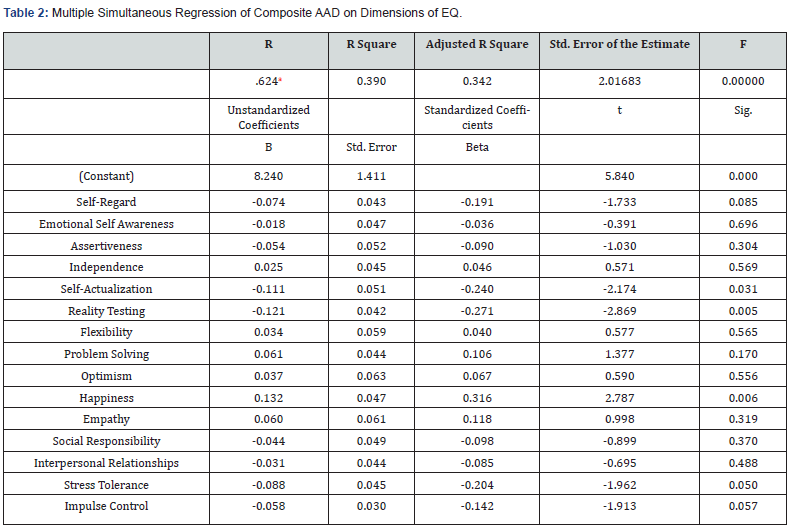
Discussion
The global measure of EQ (Bar-on EQI) is significantly negatively correlated with adult attention deficit. In general, this suggests that adult attention deficit is associated with a variety of emotional challenges ranging from assertiveness to self-actualization. The EQ dimensions of self-regard, selfactualization, reality-testing and stress-tolerance displayed the strongest univariate correlations, and all remained significant except for self-regard (p=0.08) when simultaneously controlling for the influence of the other dimensions of EQ. The results suggest that AAD is a potential constraint within the process of developing accurate representations of external situations (reality testing) and may evoke defensive reality distorting processes arising from experienced threats to self-efficacy. The significant association with poor stress tolerance supports the increased likelihood of performance disruption and reduction in self-efficacy. From a higher-order perspective, the results suggest that AAD is associated with experiential challenges including difficulty attaining general happiness and achieving a sense of self-actualization. In general, the results suggest that AAD is associated with both lower order challenges like situational assessment and stress management, and experiential challenges like general happiness and self-actualization. The directionality of the relationship between EQ and AAD requires further exploration to determine potential types of intervention and assistance. To the extent that EQ contributes to AAD, activities that emphasize improvement in emotional competency may assist in reducing or constraining the symptoms and associated performance challenges associated with AAD. To the extent that AAD contributes to EQ, addressing the key dimensions of AAD like difficulty activating to work and sustaining attention on required tasks may support significant emotional dynamics like stress tolerance, and ultimately contribute to greater self-actualization and happiness.
Suggestions for Future Research and Limitations
In order to overcome potential limitations to external validity resulting from the use of university students, future studies need to draw samples from a wider variety of adults. More complex modeling and empirical assessment of the network of relationships between AAD and EQ is required to better specific the nomological network, identify key mediators and moderators, and clarify the directionality of the relationship.
To Know more about Global Journal of Intellectual & Developmental Disabilities
Click here: https://juniperpublishers.com/gjidd/index.php
To Know more about our Juniper Publishers
Click here: https://juniperpublishers.com/index.php






